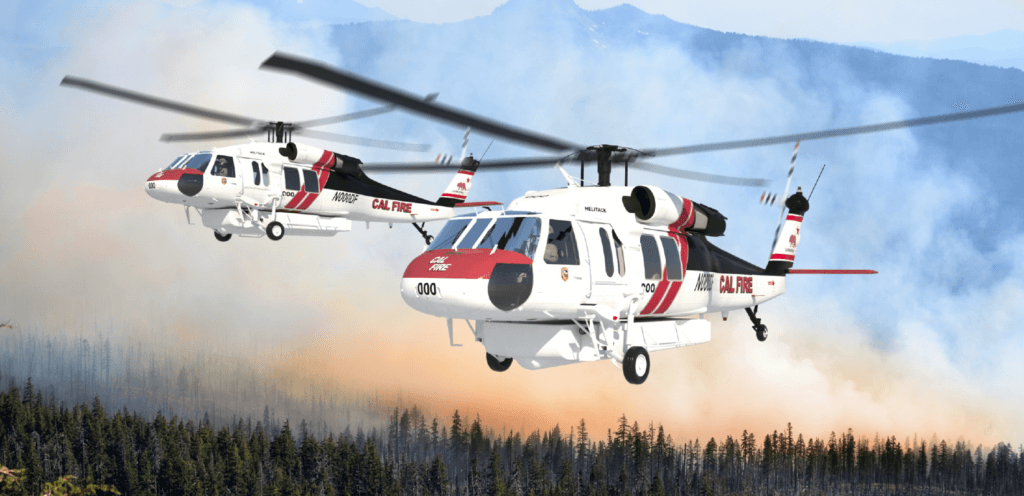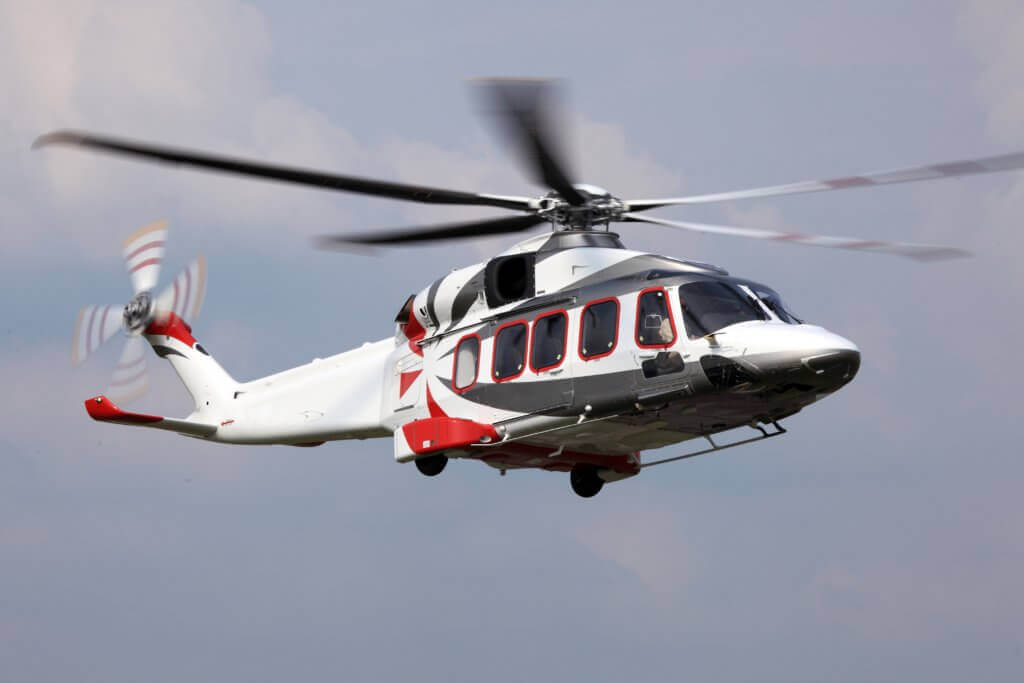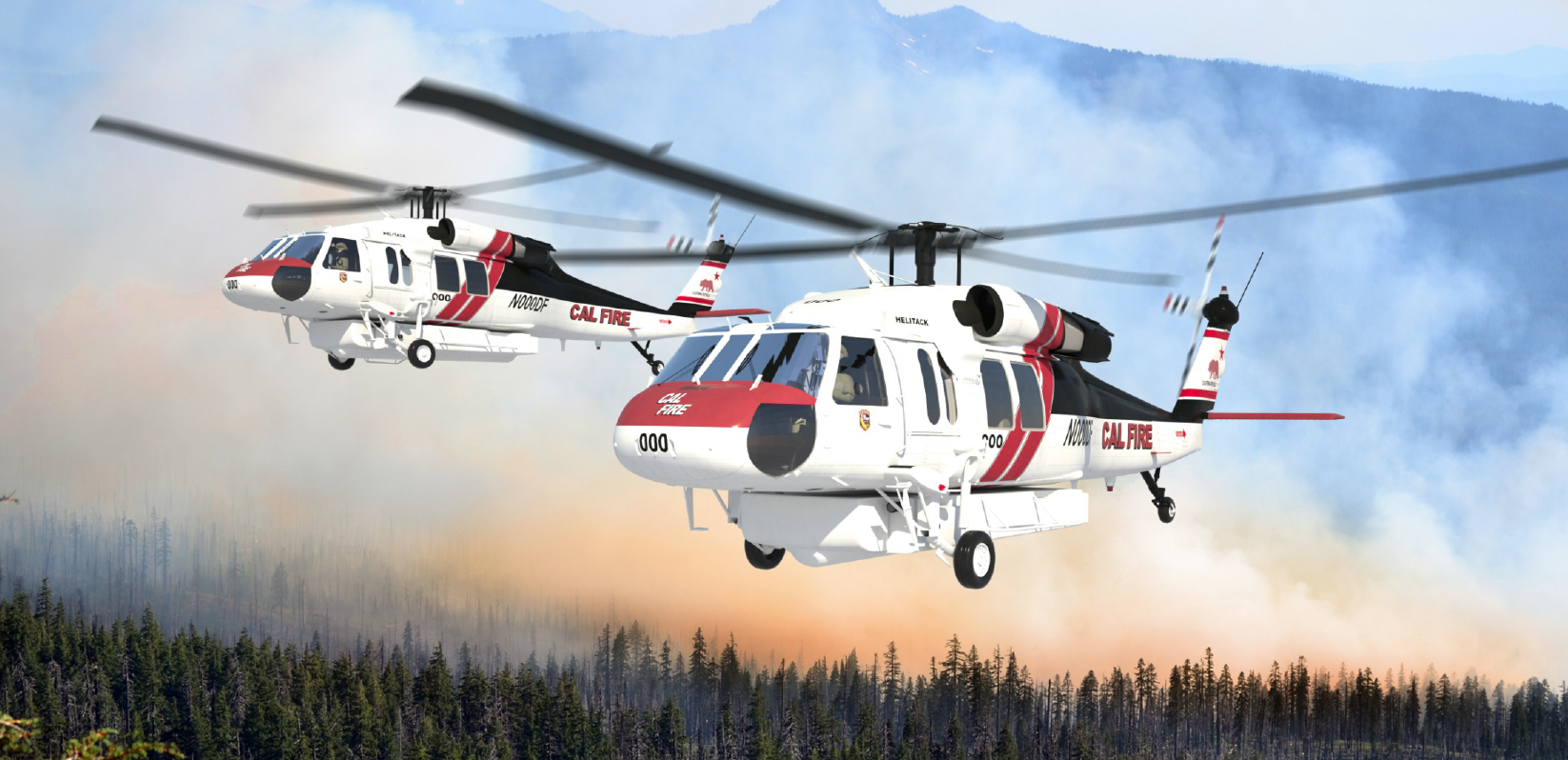The final decision to award a Cal Fire helicopter contract to Air Methods/United Rotorcraft (AMUR) came down to a razor-thin margin of just two points out of a possible 1,000 — even though the winning bid came in $63.8 million higher than a competing proposal.
A Dec. 6 ruling by Judge Jonathan Lew in the Office of Administrative Hearings cleared the way for California’s Department of General Services (DGS) to award a five-year contract to AMUR for up to a dozen Sikorsky S-70i Black Hawk helicopters, which will replace Cal Fire’s aging fleet of Bell Super Hueys.

The agency announced its selection in August of this year, but the contract award was delayed after the losing bidder, AgustaWestland Philadelphia Corporation (AWPC, part of Leonardo Helicopters) protested the decision.
Now that Lew’s ruling in favor of DGS and AMUR is available to the public, it appears that the final decision hinged, in large part, on the manner in which AWPC submitted hover-out-of-ground-effect (HOGE) performance data for its proposed aircraft, the Leonardo AW189.
Although the Cal Fire contract does not have a guaranteed dollar value, the agency anticipates purchasing 12 helicopters over a five-year period. The state released an initial request for proposal (RFP) in March 2017, but all of the submitted bids were deemed to be non-compliant.
After holding confidential discussions with the bidders to detail their non-compliance, the state re-released the RFP on May 23. It received three proposals: two from AWPC (for the Leonardo AW139 and AW189) and one from AMUR (for the S-70i).
DGS evaluated the proposals using a two-envelope method of selection. For each bid, the evaluation team first determined whether the bid was responsive to all mandatory requirements — a step that eliminated the AW139.
The AW189 and S-70i proposals were deemed to be compliant and progressed to the second stage of the evaluation: scoring of costs and desired performance parameters. The maximum possible score was 1,000 points, of which 500 points pertained to technical and administrative requirements, and 500 points to cost.
In the initial scoring, AWPC’s AW189 proposal, which had an evaluated cost of approximately $253.5 million, earned a total score of 718 points. That put it well behind AMUR’s score of 835 points, even though the evaluated cost of the S-70i proposal was much higher, at approximately $317.3 million.
However, after the DGS announced its intent to award the contract to AMUR, AWPC protested the decision on the grounds that AMUR’s proposal deviated from at least five requirements specified in the RFP. AWPC also contended that three desired performance parameters were scored incorrectly, and that its final proposal score should have been higher than AMUR’s.
In his ruling, Lew did not find any basis for AWPC’s contention that AMUR’s proposal deviated from the RFP. For example, AWPC claimed that AMUR’s bid should have been rejected because it specified a “traffic avoidance system” rather than a “traffic collision avoidance system.”

Lew dismissed such arguments, citing case law that the responsiveness of a bid must be evaluated with reference to the “public interest, rather than the private interest of a disappointed bidder hoping to prevail by identifying minor technicalities in the winning submission.”
In the realm of scoring, however, Lew sided with AWPC on two claims: first, that it should have received the full 90 points available for proposing to conduct all training within the United States; and second, that AMUR should not have received 25 points for the existence of a current, in-use water tank for the S-70i. Although the Los Angeles County Fire Department is currently using a water tank on its S-70A helicopters, witness testimony indicated that “substantial and time-consuming modifications” would be required to use that tank on the S-70i.
Those decisions increased AWPC’s score by 90 points, to 808, and reduced AMUR’s score by 25 points, to 810. With only a two-point difference between the proposals, the final decision came down to whether AWPC should have received an additional 38 points for the AW189’s HOGE performance.
The AW189 is a relatively new helicopter model, having obtained its initial certification from the European Aviation Safety Agency in 2014, and U.S. Federal Aviation Administration (FAA) certification in 2015. It is currently certified to a ceiling of 10,000 feet, although as Lew’s ruling acknowledges, this is not due to mechanical or aerodynamic limitations.
Rather, Leonardo certified the aircraft to a level below its operating capabilities in order to get it to market more efficiently. The manufacturer is currently in the process of expanding the certified flight envelope for the AW189 to 15,000 feet, and AWPC maintains that the aircraft is capable of hovering out of ground effect as high as 14,240 feet under the conditions specified in the RFP.
Although AWPC included a performance chart suggesting this capability with its proposal, in a required questionnaire, it specified an HOGE capability of 10,000 feet. This put it at a considerable disadvantage to the S-70i, which is derived from Sikorsky’s military UH-60M, has not been certified by the FAA, and does not have similar flight manual limitations.
In its protest, AWPC contended that the DGS unfairly imposed an “FAA penalty” on the AW189 by limiting its HOGE figure to the FAA-certified ceiling. Lew, however, ruled that AWPC bore responsibility for specifying the lower HOGE figure in its proposal.
“It may be that AMUR was freer to submit all manner of performance and technical data to support its HOGE because it was not FAA-certified, but the RFP imposed no constraint or limitation on AWPC to prevent it from doing likewise,” he wrote. “AWPC chose to abide by the FAA-certified 10,000-foot ceiling in its response. That was AWPC’s decision.”
Lew found that AWPC failed to meet its burden of proving that the state abused its discretion or acted arbitrarily and capriciously on the matter, and declined to award the company the 38 additional points it had requested. With AMUR prevailing in the scoring by two points, Lew denied AWPC’s protest.
Leonardo did not immediately respond to a request for comment from Vertical. In a press release, United Rotorcraft president Mike Slattery emphasized the S-70’s proven track record with the L.A. County Fire Department, and said that the company is “proud to have been selected by [Cal Fire] to provide the most effective firefighting aircraft for protecting the state’s residents and wildlife.”









